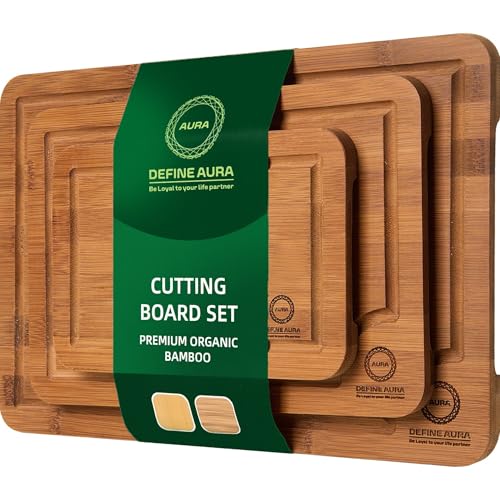How to Disinfect Bamboo Without Bleach: Chemical-Free Solutions
I have to say flat out that cleaning bamboo cutting boards without using bleach is one of those strange, specific kitchen conundrums. You want it clean, downright clean, but at the same time, you don’t want to soak your beautiful board in something that tastes like a public pool. It did to me.
I would just grab whatever all-purpose cleaner I had in the cabinet under the sink, wipe it down, and be convinced that I was doing a good enough job of it, patting myself on the back. I continued doing this until my bamboo board started drying out, cracking at the edges, and and I won’t lie developing a whiff of its own. With this experience, that’s when I started to question and research how to properly and safely disinfect bamboo without bleach. Thanks to my research and practice, I am now able to tell you the good news. Yes, you can sanitize your bamboo cutting board chemically-free. The answer to the question, “How do we do this?” is in the article. Enjoy reading 🙂
1. White Vinegar + Lemon: Magnificent Duo
I must say that this procedure has a much nicer smell than the strong and suffocating smell of bleach. Not just smelling nice is the answer; it’s that it works, and this combination does. The method is easy: drizzle a little white vinegar on the board, rub it in using half a lemon (cut side down), and leave for five minutes. Then rinse with warm water. It’s antibacterial, it’s inexpensive, and your board will have the scent of a citrus orchard. It’s useful and nice-smelling.
2. Hydrogen Peroxide (3%): learned from
This one is a trick I learned from a friend who bakes at home: pour a bit of 3% hydrogen peroxide onto the board and sweep it around with a clean rag. Allow it to foam a bit, then rinse it off. It kills bacteria without damaging the bamboo fibers, and you get to enjoy your disinfecting without bleach.
3. Baking Soda Scrub: concentrate on
If your cutting board is unclean, you can attempt this alternative. Combine baking soda and a splash of water to form a paste. Use a sponge or cloth to clean the board, concentrating on any knife grooves. Rinse well and dry upright. You need to dry it upright; do not dry it flat. If you dry your bamboo cutting board flat, it will swell.
4. Steaming (Yes, Really): kills bacteria
The first time you read or hear about this solution, it might sound a little excessive but if you own a handheld garment stealer (or even a steam mop with the right accessories), you can very lightly steam the surface of the board. It kills bacteria and doesn’t waterlog the wood. The key is to do this very lightly, not forcefully. Pressure washing would never be a good solution.
5. Sunshine Therapy: natural disinfectant
In some cases, there are improved outcomes with older methods. Place the board outside in the sun for a few hours. UV light is a natural disinfectant. I like to do this while I’m having my morning coffee on the patio—two birds slain with one sunny stone.
Final Tip: nice about
In all honesty, it’s not only possible to keep your bamboo cutting board clean without using bleach it’s preferable. No strange chemical odors, no cracked and dry wood. And besides, what’s nice about using things from your own pantry, right?
I did as I mentioned above and told you the results. Try out a few of these yourself and tell me the results. Perhaps you also have your own personal ways and experiments that I know nothing about. That way, you can encourage other people. My final tip is: if your bamboo cutting board is a bit dry, rub in a bit of mineral oil from time to time. I tried this and I could see the difference.
Read more: The Best Oil for Wooden Cutting Boards: Mineral Oil vs. Synthetic Alternatives











